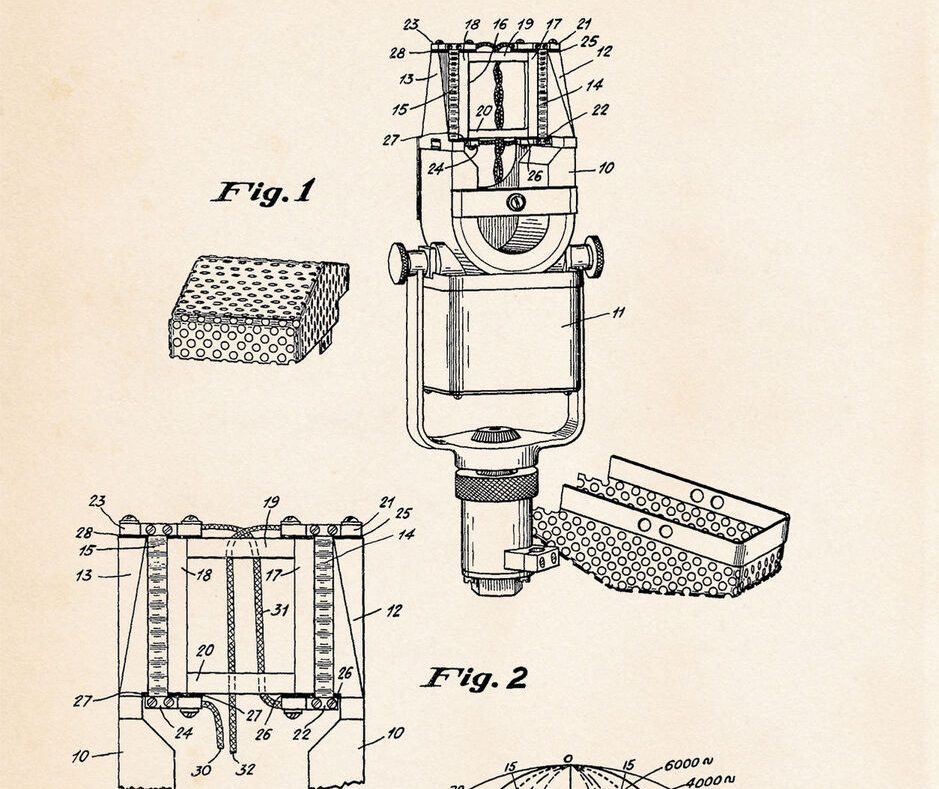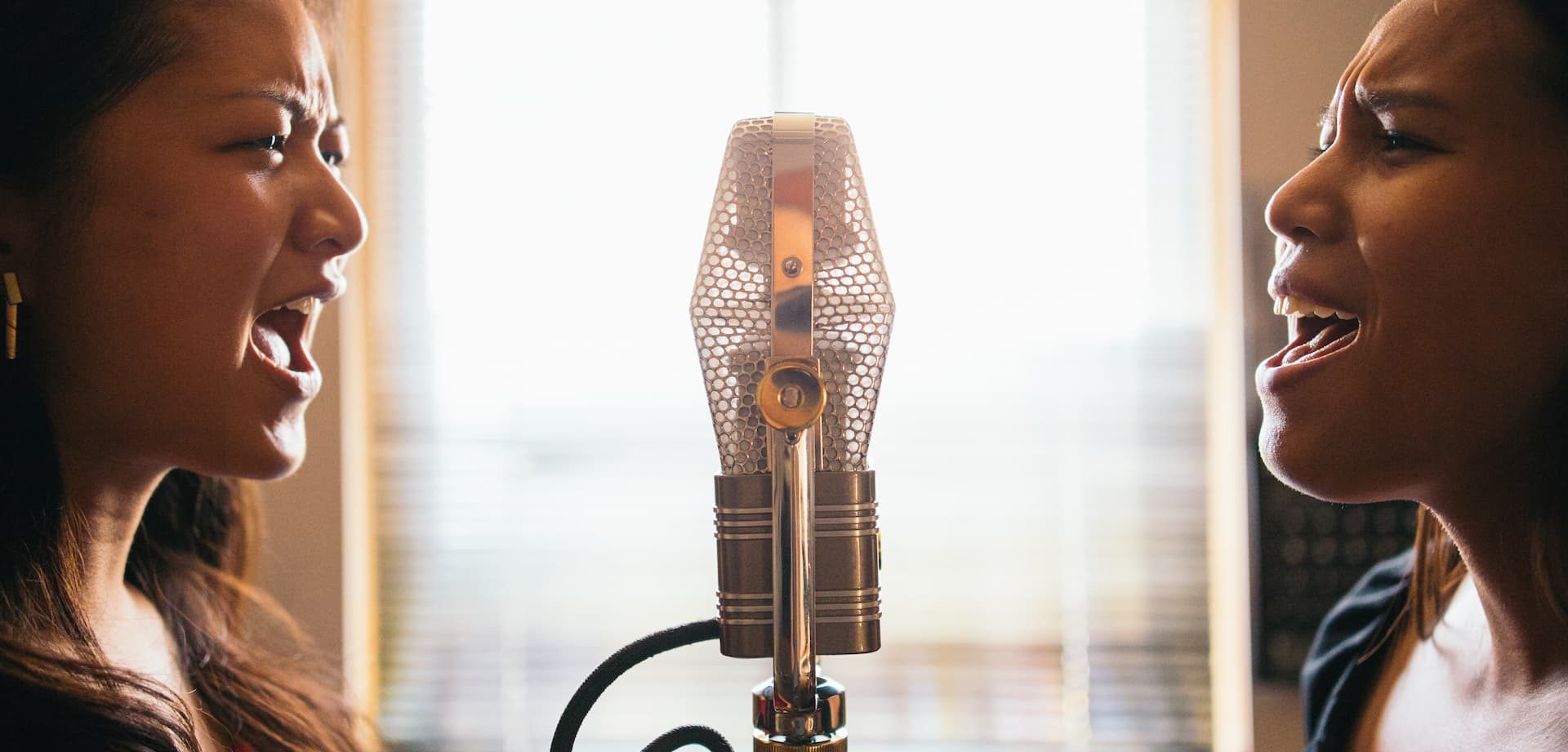In the early days of recording and broadcasting, ribbon microphones reigned supreme. To this day, studio engineers and broadcast professionals continue to turn to ribbon microphones for their unique sonic signature.
Few ribbon microphones have had the same impact on recorded music as the original RCA R44. Now immortalized in the modern AEA R44 Series, these mics are responsible for many of the 20th-century’s most iconic recordings. But the AEA R44 is more than a tribute to its ancestor—it’s essentially the same microphone.
Let’s examine the RCA R44’s history, how we’re continuing its legacy, and why the mic’s signature sound is so appealing.
The RCA R44
We’ve told the story of the R44 and AEA a million times, but it’s the cornerstone of our company and is pivotal to everything we do.
First introduced in 1931, the RCA Type 44-A Velocity Microphone was a huge step forward in recording technology. Though similar in design to previous ribbon microphones, the 44 featured a very focused figure-8 polar pattern, which solved a huge challenge faced by recordists of the time: excessive reverberation on sound stages.
Combined with a rich, natural-sounding response perfect for a broad range of instruments and vocal applications, the RCA 44 soon became the microphone of choice for recording Hollywood film scores, capturing brass ensembles, and the nuance of jazz vocalists. And when it came to recording an entire orchestra, nothing else came close.
RCA would refine the design of the RCA 44 over the following decades while dominating film and broadcast. They even developed the successor to the RCA 44 series in 1960, called the BK11, but veteran recording engineers would be hard-pressed to give up their 44s.
The Genesis of the AEA R44
RCA built its legacy for almost two more decades. But in 1976, it exited the microphone business for good. This was particularly unsettling for passionate R44 fans, especially Wes Dooley, founder of AEA.
AEA’s chief engineer Dick Knoppow noted that there were thousands of RCA 44 series microphones still in use around the world and urged Dooley to take over their servicing. So, Dooley and Knoppow met with Jon Sank, RCA’s chief engineer, to learn everything they could about repairing, maintaining, and building the ribbon mics. Sank provided everything from instructions on installing and tensioning the ribbon elements to a large stack of new-old-stock (NOS) ribbon material. He also gave AEA the ribbon corrugator we still use today.
As AEA gained experience, we began replicating and machining RCA replacement parts, keeping the components as close to the originals as possible.
By 1998, we had acquired 100 percent of the interchangeable parts used in the original RCA 44s. That year, AEA debuted our first reissue—the AEA R44C—crafted using RCA’s original methods and techniques. Twenty-two years after RCA abandoned the microphone business, the 44 would live on.
The AEA R44 Series Today
AEA R44 ribbon microphones are still precise, hand-crafted replicas of the RCA original. They feature only two notable improvements: a corrosion-resistant, cast-bronze yoke and neodymium magnets that enhance output and consistency.
Their sound is often described as big and natural, smoothing out harsh instruments. The ribbon’s ultra-sensitive nature allows you to capture incredible sonic detail and nuance. They take EQ amazingly well, and their figure-8 polar pattern is still prized for balancing focus with off-axis rejection. In every way, the AEA R44 series delivers the same world-class recording capability that made the RCA an industry standard.
Made By Hand in the USA: Then, Now, and Forever
AEA R44 microphones are still hand-made in Pasadena, CA with the original RCA methods and techniques. And they always will be. Working with our small team in a centrally-located facility allows us to maintain strict quality control and ensure that every AEA embodies the RCA 44’s heritage and revered ribbon character.
Meet the Entire AEA R44 Family
We offer five variations of the R44. The R44C is a museum-quality replica with the look of the 1936-38 RCA mics, while the R44CE is the same exact microphone with modern AEA aesthetics. Identical in sound quality, the only difference is how they look.
The A440 is a modern, active version of the R44. It is complete with a custom Lehle transformer, RPQ JFET preamp electronics and the AEA exclusive X-Motor hotrod. The X-Motor is a modified R44 transducer that includes two additional magnets that provide an extra 6db of output. Ideal for audio engineers requiring higher output, the A440 retains the same sonic character of the passive R44C, but with an additional 18dB of output and greater flexibility with different preamps.This extra power provides consistent results across a broader range of microphone preamps. When you want the same sonic character as the R44C, but with greater flexibility, the A440 is your solution.
The Flagship AEA R44 Series
The R44 Series means a lot to us at AEA. The R44C, R44CX R44CE, R44CXE, and A440 ribbon microphones are so much more than amazing-sounding ribbon mics — they continue a legacy that connects us with some of the most beloved recordings ever captured. The original RCA 44 made ribbon mics a permanent fixture for recording professionals, and when you record with an AEA R44 or A440, you’ll understand why.



